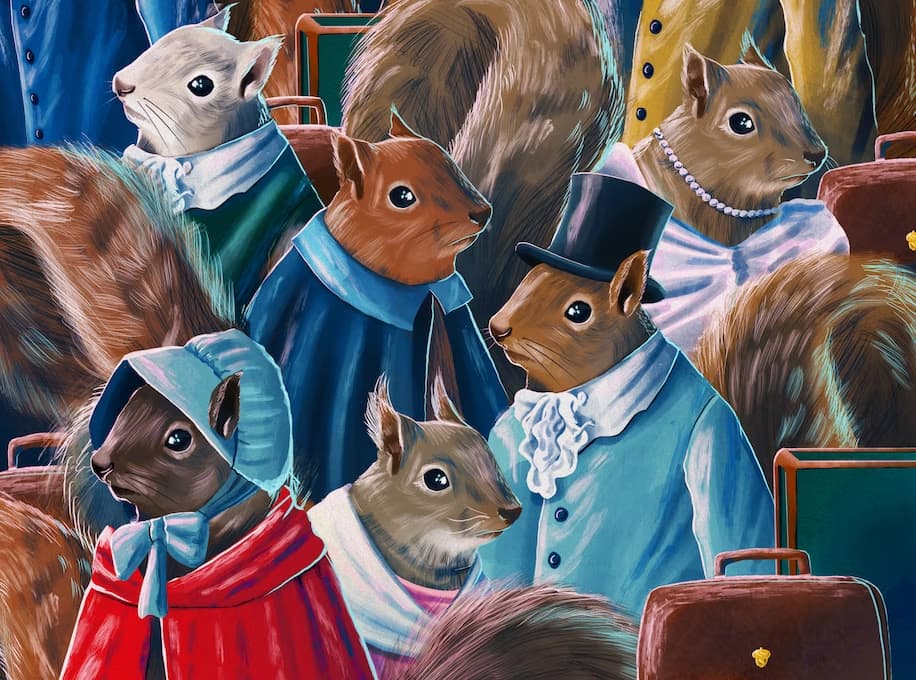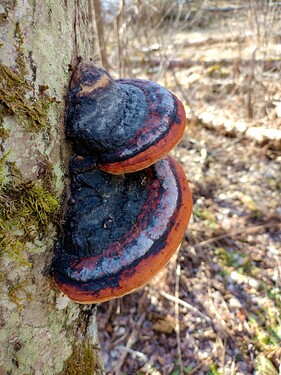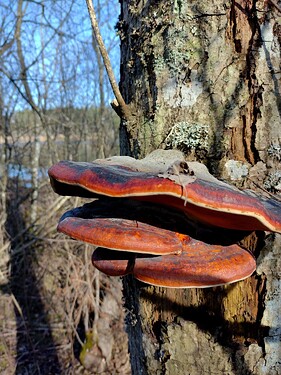This is a pic of Lake Erie this morning. Yep, we get water spouts a lot…
Ooh. Waterspouts! Must be cool too see in person but not too close. Heh.
Never had brussel sprouts but the plate looked nice @DontBeSilly.
Love Brussel sprouts. As kids, we called them baby cabbages.
Such a cutie. ![]()
News Flash! Supposed to snow this afternoon. Not spring yet. But it has been strange here. We get these EXTREMELY COLD and snowy days and then sandwiched in between we get these warm days. It’s warm enough for you to actually see flies and buds are growing on the trees. Then we get another cold spell and it kills every thing.
@Danacscott, Look what fun you can have if you visit Nova Scotia, CA.
Cute!
Wish i had snows
Send me a refrigerator and I will fill it for ya! ![]()
Here’s something for @Danacscott ![]()
![]()
![]()
Even people who love squirrels might have been unnerved at what Philo Romayne Hoy , a doctor and amateur naturalist in Racine, Wis., witnessed in the autumn of 1842: thousands of squirrels scurrying across the landscape in an unbroken wave.
It’s behind a paywall so I “gifted” it.
Aw… thanks but it wouldn’t open.
Sorry, @Danacscott ![]()
You got the pic and the first paragraph…Here’s the rest.
On they came, day after day, a great, unrelenting tide of Sciurus carolinensis: the Eastern gray squirrel. Hoy saw a similar spectacle in 1847, 1852 and again in 1857.
He wasn’t alone. The mass movement of squirrels across different portions of North America is noted in the journals of hunters, explorers, farmers and others. Every few years, thousands upon thousands of Eastern gray squirrels moved in a roughly southeasterly direction, usually in the fall. They surged through forests, their natural habitat, and into prairies, an unnatural one. They tore through cornfields like earthbound locusts, making the stalks pulsate as if buffeted by a strong wind.
Water was no deterrent. Great furry armadas swam across the Ohio (1819), the Niagara (1866), the Mississippi (1881) and other rivers, arriving bedraggled and exhausted at the far shore, where they were easy prey for hungry animals astounded at the sudden, sodden bounty.
In 1920, a wildlife writer named Ernest Thompson Seton tried to quantify the phenomenon, basing his calculations on P.R. Hoy’s account of the 1842 onslaught.
Hoy had reported that it took a month for the squirrel army to pass. Seton put the speed of the squirrels at five miles a day. He estimated how far Hoy could see at any one time and thus how many squirrels would have been in Hoy’s field of vision.
Seton factored in other variables and arrived at a density of 30,000 squirrels per square mile. He estimated the mass movement could have included more than 400 million squirrels.
Wrote Seton in “Migration of the Gray Squirrel,” his 1920 paper in the Journal of Mammalogy: “Such numbers seem incredible, and yet that is what the old naturalists said they were, unbelievable, incredible, etc.”
A tall tale, like Bigfoot or the jackalope? No.
“They were real events,” said University of Wyoming biologist John L. Koprowski, co-author of “North American Tree Squirrels.” John James Audubon was among the reputable witnesses of what are more properly called emigrations, not migrations. Caribou migrate, moving back and forth between habitats. These squirrels were on a one-way journey. Another term biologists use is “irruption.”
The last notable emigration was in September 1968, when squirrels from Vermont to Georgia took off on a hike. This attracted a lot of attention. Hunters demanded squirrel season be opened early — and bag limits doubled — to take advantage of the profusion. Animal lovers, concerned the squirrels were moving because they were starving, organized relief efforts. Florida residents were encouraged to gather acorns and send them to Tennessee.
The Smithsonian studied the phenomenon. So did teams of researchers from Maryland, Georgia and Missouri. Famed University of Maryland squirrel expert Vagn Flyger traveled from New York to North Carolina collecting carcasses. (It was easy. Highways were splattered with the unfortunate critters.)
In the end, no one could be sure why potentially millions of squirrels decided to get a move on en masse.
Koprowski said a combination of factors could be at work in a squirrel exodus. One year’s bumper crop of seeds and nuts can produce a bumper crop of baby squirrels. If that’s followed by a sparse acorn year, squirrels may decide to leave in search of food. Because gray squirrels live in communal groups of related females, it may be easier for them to decide to get going.
“You’ve got social groups that live closely together,” he said. “They could move together.”
Koprowski said he would love to witness a squirrel irruption but laments it’s increasingly unlikely.
“We don’t have the extensive continuous forests that we once had,” he said.
The most vivid accounts of squirrel irruptions date to a time when old growth forests had yet to be logged, when bison roamed the West and flocks of passenger pigeons darkened the skies. Just imagine: Squirrels as far as the eye could see.
Until and unless it happens again, we’ll have to rely on the words of our forebears, including this description from 1811: “A countless multitude of squirrels, obeying some great and universal impulse, which none can know but the Spirit that gave them being, left their reckless and gamboling life, and their ancient places of retreat in the north, and were seen pressing forward by tens of thousands in a deep and sober phalanx to the South.”
Said Koprowski: “It would have been, I think, an amazing sight.”
Wow, so much travelling for wee ![]() It would be breathtaking to see. 400 million family.
It would be breathtaking to see. 400 million family. ![]()
My paranoid self would also think: Why are you running?
equips sneakers
I bet the family reunion is a hoot with all of them. ![]()
Tis the season for webcams and babies and things…if anyone is interested…
Awww So sweet. ![]()
![]()
![]()
@Enki and @DontBeSilly
Got myself out on a hike today and took a few photos on my way. I have recently decided to actually get into photography at a slightly more serious level and bought a decent proper camera. But it’s still in the mail so for now I’ll have to make do with what my cellphone is able to accomplish.
First these set of very colourful wood decau fungi that I think I managed to capture pretty well.
Then I came across this stump that had some curious patterns and textures in it. I’m not sure just how well it was captured on the image, but I uploaded the full size so feel free to have a closer look.
(oh well, looks like the forum halved the image resolution, so that’s unfortunate.)









